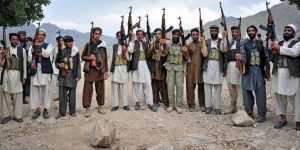Continuation of War in Afghanistan; Opportunities & Challenges
This strategy shows that America itself does not want to end the war and tries to put pressure on its rival countries.

After 16 years of US presence in Afghanistan and determining a strategy to destroy terrorism, eliminating drugs, and establishing a democratic administration in Afghanistan, it seems that none of them have been completely fulfilled and even had a downfall status. Insecurity and continuation of war are the main challenges in Afghanistan, but where is the problem and why the war has continued in Afghanistan so far?
Although corruption and the weakness of government are among the main influential factors that affect the war, other factors have also continued the war in the country.
1- Presence of various terror groups:
The security council of Afghanistan announced that nearly 20 terror groups have activities in Afghanistan. The presence of different anti-government terror groups is a major challenge in Afghan peace process. Unlike past, the government not only deal with Taliban group but various terrorist groups have made the situation worse. On the other hand, the presence of ISIL has stepped up the concerns in Afghanistan. So, the government must completely destroy small terror groups and negotiate with major anti-government terrorist groups; because negotiating with 20 terror groups at the same time is very difficult, and this even become more difficult when the government has lost many internal supporters within parties.
1- Continuing war strategy:
The strategy of continuing war rooted in the proxy war of the 21st century. In this strategy, governments are attempting to manage ‘scaremongers’ instead of destroying them. The failure of 16-year war by U.S in Afghanistan triggers the closest speculations about America’s strategy based on “strategy of continuing war.” It shows that America itself does not want to end the war and tries to put pressure on its rival countries – located near Afghanistan – by managing insurgents. Expanding insecurity in northern Afghanistan where Russia, China, and Iran – America’s rivals – are located, has strengthened the speculations.
On the other hand, many U.S military officials believe if the war ends, then, the presence of US forces will be counted as an occupier, not as a country to maintain stability in Afghanistan.
1- A strategic region:
Afghanistan is counted as a strategic country and even as hear of Asia. According to Heart Land theory; anyone who has the human and physical resource of Eurasia – located between Germany and Central Siberia – can control the world. If we match this theory in Afghanistan; the value of this country can be showed well. According to this theory, anyone who dominates Afghanistan will dominate the whole Asia. Afghanistan’s common border with Russia, China, India, Iran, Pakistan, Tajikistan and Uzbekistan is a good indication of Afghanistan as the “Hartland” of Asia. Afghanistan’s strategic role as a “Hartland” country has doubled its insecurity. During all the years of modern governance, Afghanistan has not been able to appear as a stable country, and if stability can be ensured in Afghanistan. Undoubtedly, Afghanistan will have a great economic growth.
Ultimately, internal and external factors have come together to keep the war in Afghanistan. The only way to get out of this long and lasting war, is to create a central stable government, shared with all ethnics of Afghanistan and all politicians should fight against external factors that made Afghanistan unstable instead of internal conflicts.
Mahdi Sarbaz – (DID) news agency
Translated by Taher Mojab